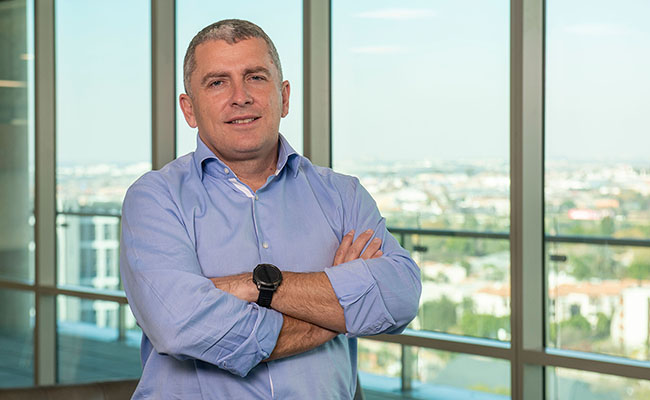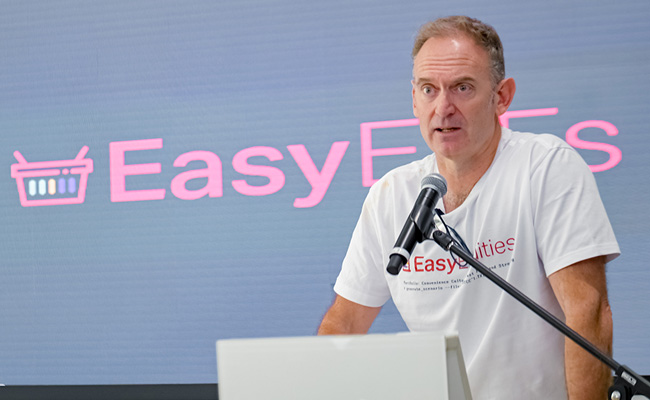Jurie Strydom didn’t wait long to show his hand. Delivering his first set of results as Old Mutual CEO this week, he announced a R3bn share buyback – a bold signal of confidence in the insurer’s future after years of being on the back foot.
The move lifted Old Mutual’s shares 3.2% on the day to R13.86. For investors, it marks a show of ambition from a company that has long trailed larger rival Sanlam and struggled to recover from costly overseas ventures that had distracted it from its home market.
Since unbundling Quilter in 2018 and spinning off its Nedbank stake, Old Mutual’s shares have more than halved, sliding from R22 to R9.80 in April. The slump reflects a legacy of poorly timed deals, including forays into the UK, US and Asia, as well as its 2006 purchase of Skandia and US asset manager Pilgrim Baxter.
Strydom insists the business has the ingredients to turn it around. “I wouldn’t have taken the job if I didn’t think we could do that. It’s an iconic business, an amazing brand and everyone I speak to wants Old Mutual to be successful. More successful. What we presented today are the levers that need to be pulled,” he tells Currency.
The former CEO of Sanlam Personal Finance served as a non-executive director on Old Mutual’s board for 18 months before taking the top job, so he knows the challenges. Key among these, Strydom says, is making the business more efficient and regaining market share.
“We’ve announced a capital allocation framework, and what it really says is that once your returns are in the range you’re targeting, then you’ve earned the right to deploy more capital, but when you’re trading below that, you’ve got to look carefully at the opportunities for shareholder distribution,” he says.
The buyback, Strydom believes, signals both confidence in the business and the insurer’s balance sheet – even as Old Mutual faces the costly task of launching a new bank, which racked up R579m in first-half losses.
Already, however, the bank – launched under former CEO Iain Williamson, who opted for early retirement – has R1.5bn in deposits, a R15.5bn loan book and a network of 346 branches. Still, Williamson previously told Currency the bank will only reach breakeven once it has 2-million to 2.5-million customers, likely only by 2028.
While the bank will be a drag until then, Old Mutual’s results were flattered by buoyant equity markets in South Africa and Malawi, and by a strong performance from Old Mutual Insure.
But the core life business is under strain. “It’s been a theme across the market: new business pressure,” Strydom told reporters on Wednesday. The value of new business slumped 50% to R432m, with lapses higher than expected, especially in the funeral market, where competitors are eroding Old Mutual’s turf.
“We have to recognise that there’s a structural element here which is that people are churning funeral policies faster than perhaps had been the norm before, and we have to bring that into our actuarial assumptions, and we’ve done that,” says Strydom.
“Having more competition in the funeral space and having people hold a funeral policy for shorter than they used to has compressed margins, and so our business needs to adapt,” he says. “We adapt by being more competitive and also by reducing the cost to serve customers.”
This has weighed on the valuation of the entire business, which Old Mutual pegs at R18.40 per share. Overall, adjusted headline earnings per share were 31% up, at 96.6c and Old Mutual declared a dividend of 37c a share, an increase of 9%, year-on-year.
Driving execution
Strydom says Old Mutual must create “greater clarity” around “what the group does versus what the clusters need to do” and then “give people ownership and hold people accountable; those are the basic things that will drive execution”.
Part of that clarity includes retrenching from Africa. The group has withdrawn from Nigeria and Tanzania, and is winding down its operations in South Sudan. “These actions underscore our commitment to concentrating resources on markets with the greatest potential for sustained long-term value creation,” said the company in its results statement.
Like Momentum, Old Mutual has scheduled a capital markets day for the end of October to thrash out its grand plans for investors.
That will be a key event, says Umthombo Wealth portfolio manager Alexander Duys, to assess whether management can deliver on its “improved trajectory”. Historically, Umthombo has avoided Old Mutual because of its “weak operational execution, poor management, and questionable capital allocation”.
But Duys says the picture is changing. “The adoption of more conservative actuarial assumptions, together with a sharpened focus on cash earnings and returns, signals an improvement in management discipline and a better alignment with shareholder interests,” he says.
Top image: Old Mutual CEO Jurie Strydom. Picture: supplied.
Sign up to Currency’s weekly newsletters to receive your own bulletin of weekday news and weekend treats. Register here.














